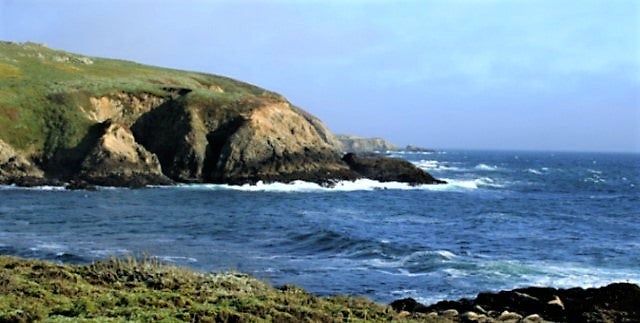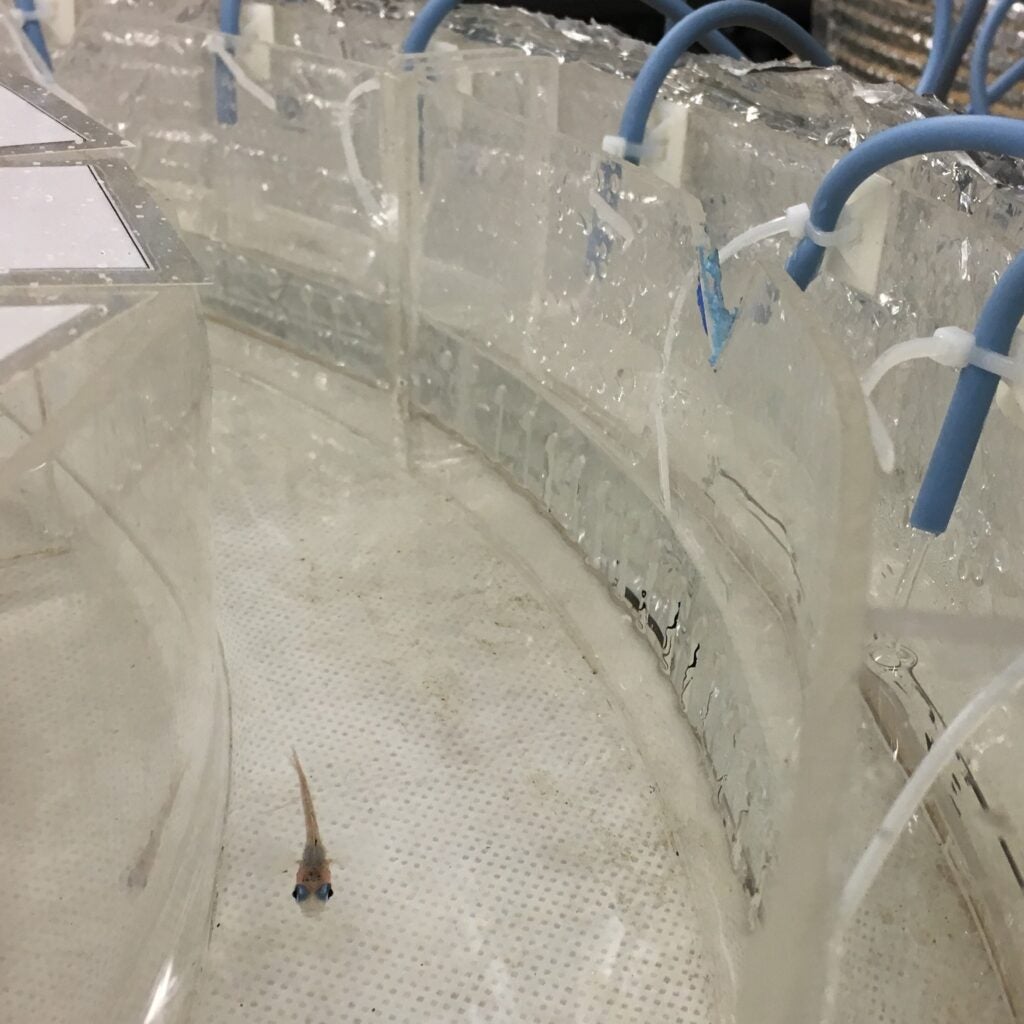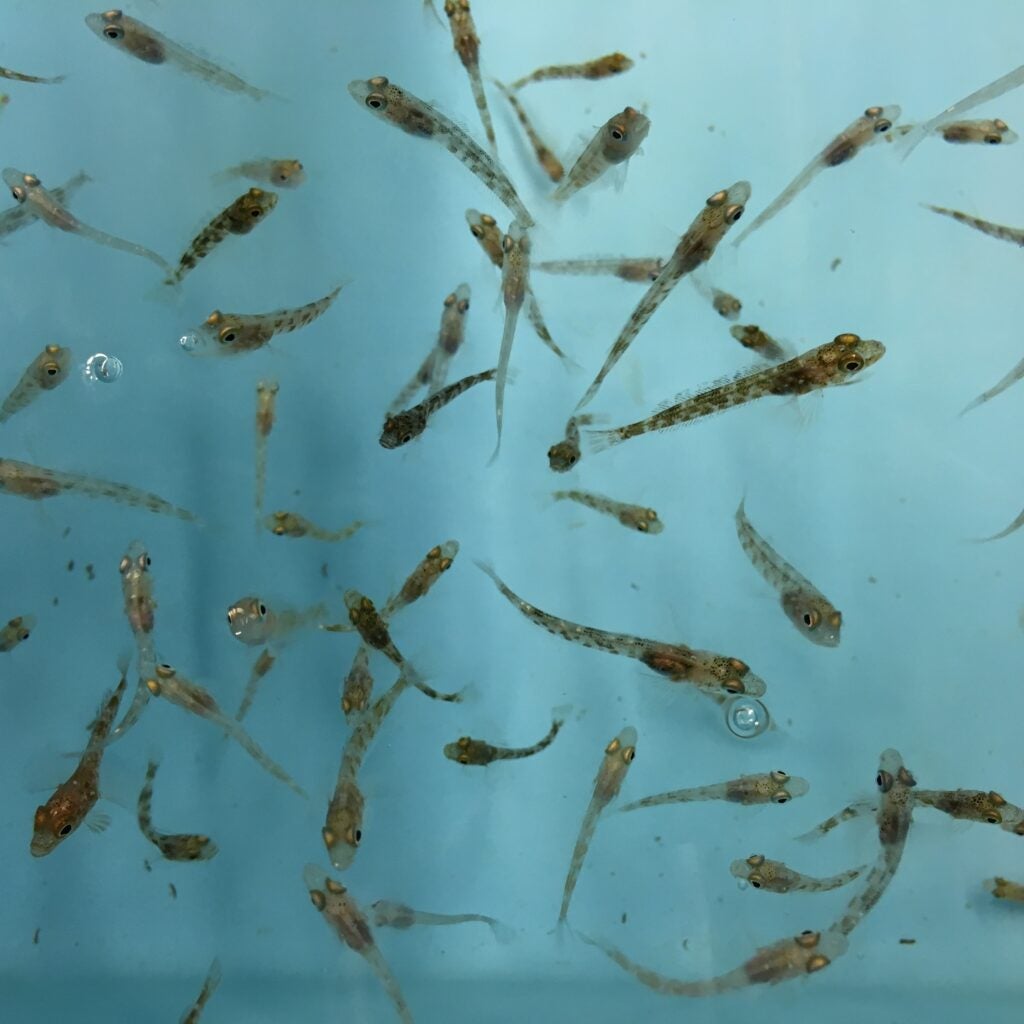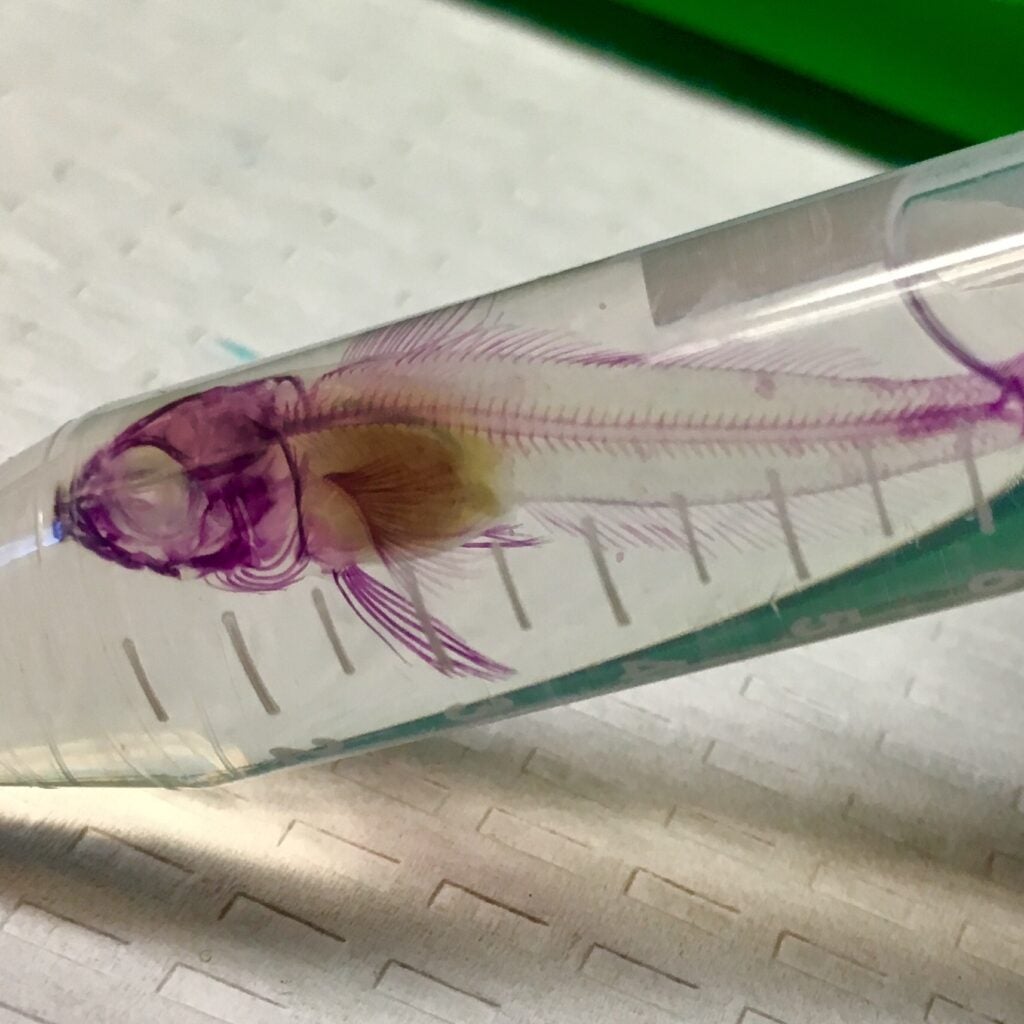More Research

Fish Entrainment Risks
We are studying the impacts of small-scale agricultural water diversions (typically open-ended pipes that pump water directly from the rivers while also drawing in, entraining, fish), and historically this has been considered a minor contributor to fish mortality. However, in California, there are over 3,700 water diversions on the Sacramento and San Joaquin Rivers and their tributaries, and in the Sacramento-San Joaquin Delta and Suisun Marsh. Of these existing diversions, over 95% are unscreened with no physical barrier to prevent fish entrainment. We have shown that juvenile Chinook salmon and green sturgeon are susceptible to entrainment at unscreened water diversions and we are testing the efficacy of behavioral and hydraulic deterrents designed to direct fish past water diversion pipes at distances far enough from the pipe’s zone of hydraulic influence.
Physiological, Genomic and Climate Modeling to Understand the Impacts of Climate Change on Delta Smelt
The delta smelt (Hypomesus transpacificus) is a pelagic, annual fish species endemic to the Sacramento-San Joaquin estuary, whose abundance has dramatically declined since the 1980s, and is listed under the Federal Endangered Species Act (ESA). Considerable efforts are underway to understand the causes of this recent population decline as well as to produce accurate risk assessment and management strategies that consider ongoing changes associated with climate change. Combined, climate change models predict that Bay-Delta aquatic organisms will face not only increased temperature, salinity and altered turbidity regimes, but also increased variability in these parameters. We have several projects focused on delta smelt: (1) assessing physiological tolerances for temperature, salinity, and turbidity change, (2) investigating the underlying physiological mechanisms of tolerance, and (3) integrating tolerance and stress response data into spatio-temporal climate change models in the Bay-Delta to assess future habitat suitability.
Splittail Research
The Sacramento splittail, Pogonichthys macrolepidotus, is Federally listed as a species of special concern and there is very little information available about natural history and population dynamics in this species. A recent study revealed two genetically-distinct populations of splittail thought to occupy distinct regions of the estuary and suggesting to managers that recovery strategies should account for this variation. Notably, these regions of the estuary differ markedly in local salinity regimes. In this collaborative study, we are working with fish geneticists, biotelemetry experts, and population modelers to address population dynamics in splittail. We are testing whether genetic differences translate into intraspecific variation in physiological traits such as growth, metabolism, and behavioral and physiological responses to altered salinity regimes.
Hardhead Research
Hardhead (Mylopharodon conocephalus) is a California fish Species of Special Concern, yet environmental limits for its management are largely unknown. Hardhead abundance may be declining throughout much of its range partially due to resource competition from non-native fish species, but also from anthropogenic river alterations including temperature and flow changes due to hydroelectric operations. We are evaluating the physiological responses (resting and active metabolic rate determinations, swimming performance, thermal tolerance, and blood-oxygen equilibria) and behavior (thermal preference) of hardhead across a range of environmentally relevant temperatures. These data are intended to assist in developing thermal targets for future and current Federal Energy Regulatory Commission (FERC) licensing of hydroelectric projects in California.
Sturgeon Nutrition and Stress Tolerance
Food webs in the SFBD are changing rapidly, potentially affecting the food source for many species including wild white (threatened) and green (endangered) sturgeon. Additionally, climate change effects (e.g. temperature and salinity alterations in this case) stand to challenge sturgeon physiology. In this new project, we are manipulating nutritional status in larval, fingerling and juvenile green and white sturgeon and assessing the effects on physiological tolerance to temperature and salinity stressors.
Environmental Physiology and Marine Climate Change
Global climate change has profound implications for coastal marine ecosystems and current predictions include an increase in average sea-surface temperatures, ocean acidification (OA) due to the increase in dissolved carbon dioxide (CO2), altered ocean circulation patterns, and a rise in sea level. Recent evidence from polar, temperate, and tropical ecosystems has shown that climate change has already affected the distribution and local abundance of many marine organisms. Because temperature has pervasive effects on biochemical and physiological rate processes and plays a fundamental role in shaping the distribution and abundance of marine organisms, one of the direct consequences of global change is a possible shift in species distributions, or “hot spots” of species loss, as a result of thermal stress. In addition, there is growing concern that ocean acidification and its consequences for marine organisms may also be an important driver of future ecological change in marine ecosystems. We are studying juvenile rockfishes to understand the consequences of growing up in a high-CO2, high-temperature world. To date, few studies have been conducted on effects of OA on non-calcifying marine organisms such as fishes. We chose the temperate rockfishes for our investigations for several reasons, including their economic and ecological importance in Pacific marine ecosystems, and life history traits (such as long life and slow maturation) may make populations particularly sensitive to negative impacts. We are measuring a suite of performance indices ranging from whole organism aerobic scope, growth and developmental indices, genomics (in collaborations with A. Todgham), and proteomics (in collaboration with L. Tomanek) to assess whether or not these organisms have the physiological plasticity or resilience to tolerate and perform in the face of environmental shifts associated with climate change.

Antarctic Fish Physiology
The waters surrounding the southernmost continent have been relatively stable for millions of years, which may enhance the vulnerability of its fishes to novel rates of warming and ocean acidification. This past field season, we studied the capacity of juvenile Trematomous Bernacchii to acclimate to projected climate change conditions by assessing physiological, biochemical, and behavioral metrics. Juveniles were collected from the wild and exposed to a long-term acclimation of projected ocean warming and ocean acidification simultaneously. Particularly we are interested in understanding the effect of multiple stressors and how fish responses change with longer acclimations.
Our team assembled two annular temperature preference rings in McMurdo Station’s aquarium. For this experiment we place a fish in the arena and assess which temperature wedges the fish spends the most time in. We hypothesized that these fish living in the world’s coldest waters are physiologically constrained by the below freezing temperatures that they evolved under and may prefer slightly warmer conditions.


